#les rallizes dénudés
Text
youtube
Hatsune Kaidan cover of White Awakening by Les Rallizes Dénudés from 2014 album "Tribute To Les Rallizes DéNudés"
21 notes
·
View notes
Text



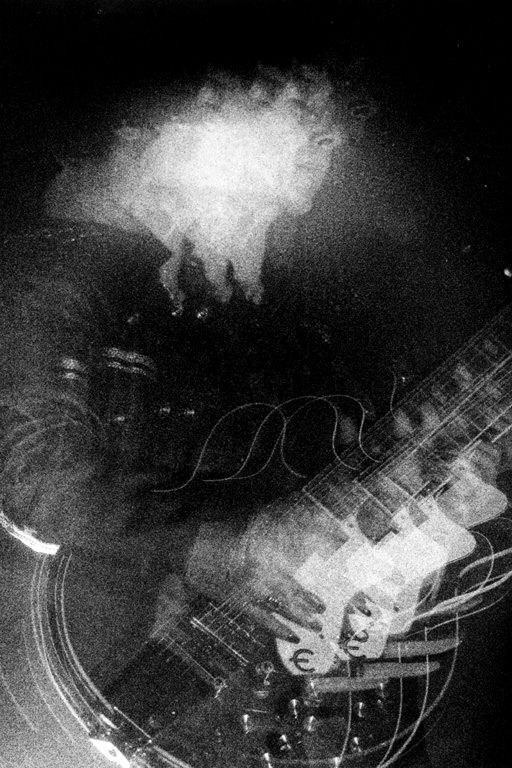
les rallizes dénudés (photos by takehiko nakafuji)
132 notes
·
View notes
Text
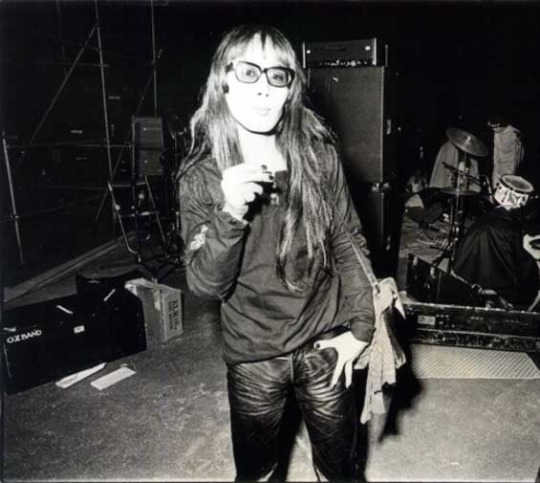
Les Rallizes Dénudés
#les rallizes dénudés#psychodelic rock#post rock#noise rock#noise music#keiji haino#takashi mizutani
8 notes
·
View notes
Text
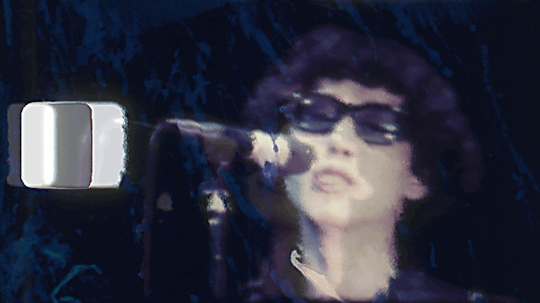

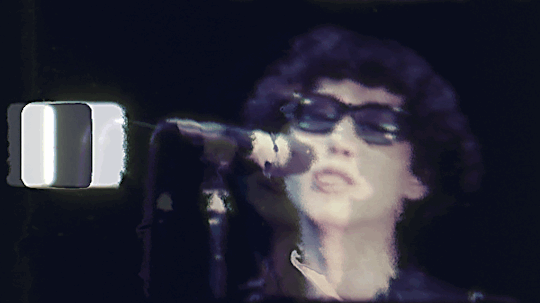

After years of consuming only lo-fi recordings [...] Les Rallizes Dénudés sound spectacular, and this clarity adds another dimension to the band’s sound.
Who’d have thought the greatest band of all time might still sound phenomenal when they aren’t just recorded and mastered like total shit?
- Cal Cashin, Reissue Of The Week: Les Rallizes Denudes' CITTA 93
12 notes
·
View notes
Text
5 notes
·
View notes
Text




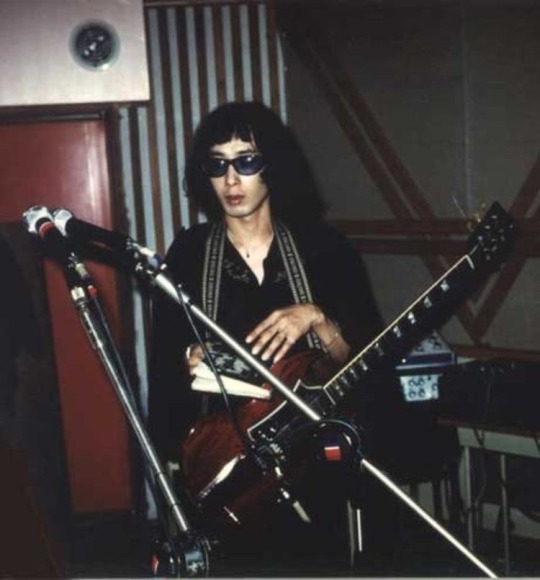
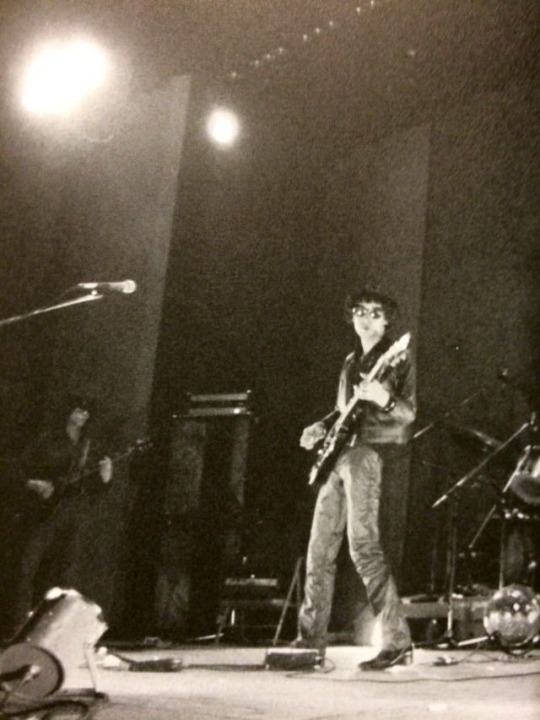




Takashi Mizutani, the coolest man ever.
45 notes
·
View notes
Text

Les Rallizes Dénudés - La Fleur d’hibiscus
Hibiscus Flower イビスキュスの花
Artwork by Akira Uji
5 notes
·
View notes
Video
youtube
Les Rallizes Dénudés - ’77 LIVE (excerpt) (Official)
28 notes
·
View notes
Text

les rallizes denudes // mizutani live at kyoto university 10/07/1994
#les rallizes denudes#mizutani#live#noiserock#psychedelicrock#psychedelic rock#noise rock#1990s#takashi mizutani#les rallizes dénudés
2 notes
·
View notes
Text
takashi mizutani i would do anything for you 🫶
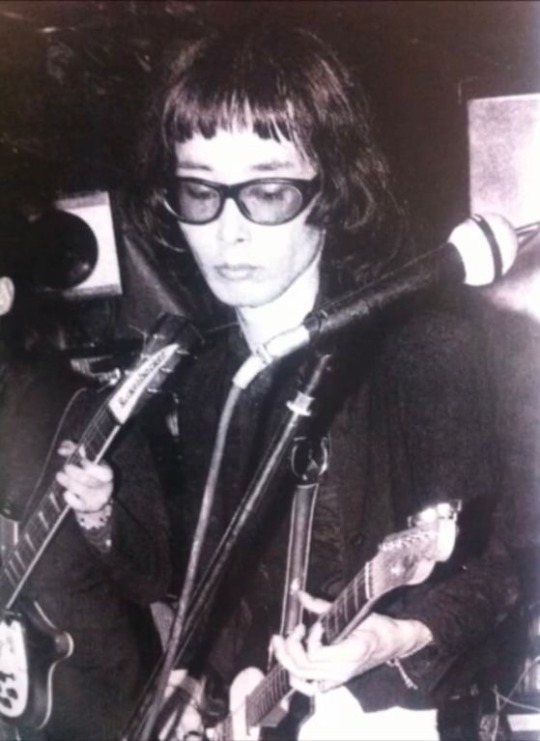


3 notes
·
View notes
Text
#james ferraro#neon genesis evangelion#lil b#les rallizes denudes#les rallizes dénudés#tek lintowe#chief keef#persona 2
4 notes
·
View notes
Text
Listening Post: Les Rallizes Dénudés

It’s difficult to paint an accurate picture of the history of Les Rallizes Dénudés, as an aura of mystery and an inordinate amount of conjecture surround the band. This we do know: Les Rallizes Dénudés sprung from the fertile music scene in late 1960s Japan, in striking opposition to the Group Sounds and folk-rock music that was popular in their country at the time. The original line-up of the band formed in 1967 at Doshisha University in Kyoto, comprising guitarist and vocalist Takashi Mizutani, guitarist Takeshi Nakamura, bassist Moriaki Wakabayashi, and drummer Takashi Katoh. They initially dubbed themselves Hadaka No Rallizes but, according to legend, after Mizutani befriended the radical theater ensemble Gendai Gekijo they became Les Rallizes Dénudés in accordance with the fake French slang that the troupe had invented.
Throughout the band’s three-decades-long existence, they cut a striking figure. Fronted by the long-haired, sunglasses-and-leather wearing Mizutani, Les Rallizes Dénudés took sensory overload to a new level. The band’s live shows were punishingly loud and replete with extreme visual elements. They had a repertoire of just over a dozen songs, but the myriad bootleg recordings that appeared in the band’s wake indicate that Mizutani and company never played a tune the same way twice. Their music seemed deceptively simple, with bass-and-drum vamps that stretched to infinity overtop of which Mizutani unfurled scorching clouds of guitar noise and vocals sung in his native Japanese.
After original bassist Wakabayashi was involved in the hijacking of a plane in 1970, the already enigmatic Mizutani became downright elusive. Outside of their iconoclastic leader, Les Rallizes Dénudés’ membership rotated frequently. Official recordings didn’t appear until 1991, at which time the band issued a trio of CDs compiled from various studio and live recordings from across the first decade of their existence. These quickly disappeared, as the legend of Les Rallizes Dénudés had grown considerably by this time, likely indirectly due to acts like High Rise and Fushitsusha that followed in their wake.
Mizutani passed away in 2019, and shortly thereafter an organization dubbed The Last One Musique appeared, complete with a new website devoted to the band. Earlier in 2022, the Temporal Drift label began issuing Les Rallizes Dénudés material, notably The Oz Tapes and the Oz Days Live compilation, supported by The Last One Musique. In November, the label plans to reissue those first three official releases – ’67-’69 Studio et Live, MIZUTANI / Les Rallizes Dénudés, and ’77 Live – completely remastered and with new liner notes that will hopefully dissolve some of the fog-like mystique surrounding the band.
We here at Dusted have varying levels of affinity for Les Rallizes Dénudés, and felt that through group discussion, we’d be able to approach the music most adroitly. Given the sheer volume of material involved (The Oz Tapes is a double LP, ’77 Live is a triple LP, and the Oz Days Live compilation is a triple CD), we chose to focus on the official releases.
I don’t know about you guys, but that ’77 Live release is what I typically associate with the Les Rallizes Dénudés “sound”. Apparently that Heavier Than a Death in the Family bootleg includes some of this material.
Intro by Bryon Hayes
youtube
Ian Mathers: So, while I'd certainly heard of them (albeit thinking they were French for a bit when all I knew was the name), my first real encounter with Les Rallizes Dénudés was only a few months ago, hearing the Heavier Than a Death in the Family version of "Night of the Assassins" and going “What is THAT?” I hadn't gotten around to investigating much further than that, though, so this Listening Post is both very convenient for me, personally, and also when I started playing '67-'69 Studio et Live and "Les Bulles de Savon / Soap Bubbles" began I was very surprised. Like you, Bryon, '77 LIVE is more what I expected, albeit on far more circumstantial grounds. And while, once I adjusted to the gentler, arguably more dated material on '67-'69 and MIZUTANI / Les Rallizes Dénudés none of it is particularly unpleasant or hard to deal with, it does suffer for me in comparison to '77 LIVE which on first listen is one of my favorite things I've heard all year, maybe longer. The 95-minute length and sheer abrasiveness of its noise means it's not going to be a casual play around my apartment, but I can honestly say I was riveted for every minute the couple of times I've been able to fit it in so far. The length of each track and of the album as a whole is part of what I think is so distinctive and incredible about it.
So if these three official/out of print releases have been around at least to some degree since the early 1990s, is the softer/folkier(?) sound of much of the studio stuff on there a big part of what people like about Les Rallizes Dénudés? I feel like once I heard more than the name I mainly heard people referring to the noisier stuff. And why did it take until this listen to realize that the bassline on what '77 LIVE calls "夜、暗殺者の夜 / The Night, Assassin’s Night" makes me think of that "I Will Follow Him" song from Sister Act?
Mason Jones: I've heard a number of people refer to Rallizes as "Japan's answer to the Velvet Underground," which rings true in part because of the bands formed in their wake. While they were never well-known, perhaps "notorious" is a better description. Their influence leaked out over years, and their shadowy presence and noisy psychedelic swirl can be traced to many independent bands. I doubt that Keiji Haino would regard them as much of an inspiration for Fushitsusha, but there's at least a visual aesthetic that's even more visible in Kousokuya and Kaneko Jutoku's work and lurks behind many other bands related to the PSF label such as Shizuka and High Rise. Some of Japan's psychedelic underground readily admit Rallizes' inspiration, such as LSD March, Up-Tight, and Overhang Party.
Where the Boredoms inspired an entire Kansai scene of anything-goes indie anarchy, Les Rallizes Denudes infiltrated a smaller but no less impactful network of smoke-drenched psychedelic players. The heavier, noisier aspect of Rallizes is better-known outside Japan, but from the deep, slow strums of Suishou no Fune to the quieter aspects of Majutsu no Niwa and LSD March, the softer side is definitely there as well. That said, I've certainly always been more attracted to their more crazed, no-holds-barred work like that on '77 LIVE and bootlegs like Blind Baby Has Its Mothers Eyes. The 1980 Live and Soundboard collection (10 CDRs!) and Double Heads boots are also among the better ones, but in truth over the years it's been nearly impossible to untangle the recordings spread across dozens and dozens of poorly assembled bootleg releases. Seeing properly mastered and collected releases coming out now is very, very welcome.
youtube
Ian Mathers: Which brings up one of the biggest questions I have about all this: how does one “properly” master something like '77 LIVE? I think it sounds fantastic, so I clearly agree with the choices made, but I wonder what's involved and what's different about working with source material like that.
Mason Jones: It's hard to say. In this case, it's possible that they have the original tapes, whereas the versions I've heard before are probably second generation or worse; very possibly duped from an old LP or cassette! However, I'm listening right now and comparing the old Le 12 Mars 1977 à Tachikawa bootleg I have, which is the same as '77 LIVE — same track lengths and all. The older bootleg feels slightly thinner and hissier, but interestingly it doesn't sound as much worse as I recalled. That one has a long history of unofficial re-releases, as shown on its Discogs page. The old bootleg I have of Mizutani is certainly improved on by the new reissue, with a great deal more clarity. I don't seem to have any previous releases that correspond to the '67 - '69 Studio et Live reissue, which is an intriguing collection of ragtag recordings.
The OZ Tapes by Les Rallizes Dénudés
Ethan Covey: It’s funny you mention mastering as there was a minor Twitter flare up a few days back when someone posted a screenshot comparing audio files from the old CD release of ’77 Live with the new edition. It looked as if the dynamic range on the new release was crunched/maxed out/whatever the correct terminology is, versus a more forgiving mix on the CD. And there was the accompanying grumbling that modern mastering — especially on a release like this — is all about volume at the expense of subtlety. I haven’t listened to the new ’77 Live yet but have to say the mastering on The OZ Tapes sounded fantastic compared with previous versions of that material. I look forward to listening to the LP (if it ever arrives), and digging into these “new” ones.
Mason Jones: Yeah, I can see that. Listening to my old CD copy versus the new one, while I haven't compared the files specifically there's certainly more modern compression on the new release. That's fairly typical these days. To my ears, it doesn't seem excessive, but it'll take more listening to let it sink in for sure. I do have to chuckle a bit about the idea of "subtlety" dealing with blown-out live recordings like these. As you say, though, I'm waiting for my LP copies to arrive, which will be a better test than mp3s.
Bryon Hayes: I have a question for Mason and those of you who've been following Les Rallizes Dénudés for some time and have access to recordings from across their existence: these three releases document a band that appears to have experienced a sizeable shift in sound in its first decade of existence, from the almost garage-y tunes of '67-'69 Studio et Live and the softer acoustic sounds of MIZUTANI to the overdriven feedback onslaught that is the '77 Live set. Does anyone know if this was a subtle transition that occurred slowly throughout the decade, or was there a Big Bang moment, with a clear delineation between those two sides of the band?
Mason Jones: That's an interesting question, Bryon. I really don't have a solid answer but can make some guesses. The sequence you list is accurate, and these three albums essentially document three phases of the band: the first lineup from '67 to '69. The acoustic work on Mizutani was him sort of on his own (with some others playing with him) during the period when there wasn't a full band. Then in 1970 he moved to Tokyo and started with a new lineup. Takeshi Nakamura, who started the band with Mizutani, was quoted as saying "The live shows were really high volume from the very beginning" so the shift from garage-y as you describe it to the more out-there tracks might have just happened naturally due to the almost complete change in band members. But who knows, perhaps some of it's simply the selection of tracks we're hearing!
youtube
Ian Mathers: I am sympathetic to "loudness war" type concerns, generally, but I have to admit the notion that the stuff here that I really like would not be brickwalled seems a little funny. Interesting to know that aside from Mizutani himself there was a pretty complete change of personnel; I still kind of wonder, given the more standard/quality production on those earlier records, how much the production, not just the playing, on '77 Live was a deliberate aesthetic choice. Do we know if it's more a case of them playing high-volume shows with recording equipment that just wasn't up to the task, in unexpectedly glorious ways, or is there any indication they were leaning into that part of their sound (whether that's using equipment a step down from what they could, or playing in certain ways, or the recording process, or mixing, or...)? Any answer isn't going to make me like that sound less, to be clear - I have no stake in this being some variety of outsider or accidental art. I do wonder if when they first heard the tapes they went "great!" or "oh no..." though.
Mason Jones: Yeah, it's hard to say whether the sound was intentional or not. In the case of the live recording, it's worth keeping in mind that in Japan it's unusual for bands to have their own equipment aside from the instruments and effects -- the live houses have amps and drums that the bands use. Since so few people drive, it's uncommon to be able to bring your own stuff. That means the amps they were using would have been the house amps, although '77 Live was recorded at Tachikawa Social Education Hall; who knows if they had a regular backline or rented equipment for the show. In any case, who knows how they felt about the tapes when they first heard them.
The overblown sound, though, was almost certainly the primary influence for Nanjo Asahito's recording and mastering approach for the first High Rise albums and later work that he did. Those recordings were infamous for the brick wall limiting, pushing everything into the red. I don't know for certain but given Nanjo's appreciation for Rallizes I'd be shocked if the sound of '77 Live wasn't the initial inspiration for that approach.
Bryon Hayes: According to the information I've scrounged online, not only was the band notoriously loud, but they were also accompanied by a frenzied lightshow, beginning with their earliest performances. Apparently Mizutani coined the term "total sensory assault" to describe the experience and it is claimed that was the goal from the start. Of course, given the amount of speculation and conjecture that surrounds the band, this could be a red herring. In some respects, I hope that as Temporal Drift release more material, the mystery will slowly unravel, but I also kind of enjoy the mystique.
32 notes
·
View notes
Text
remembering takashi mizutani, frontman of les rallizes denudes and the greatest guitar player of all time

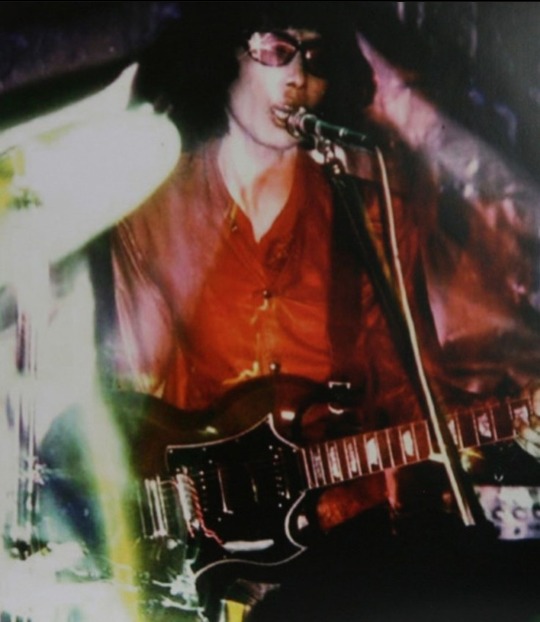
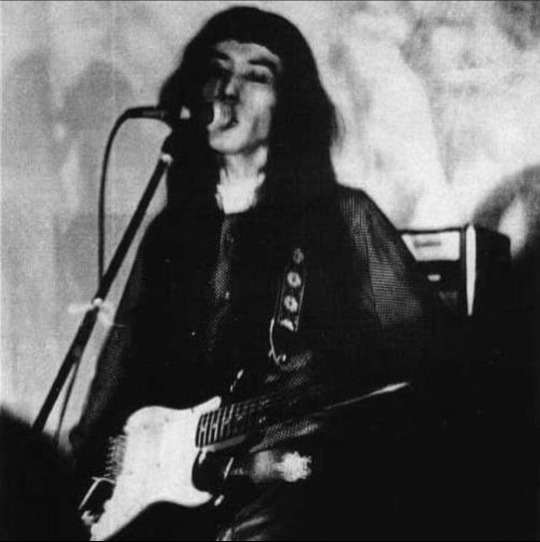

3 notes
·
View notes
Text
Enter the Mirror: A Celebration of Les Rallizes Dénudés 6/17/23 Chicago
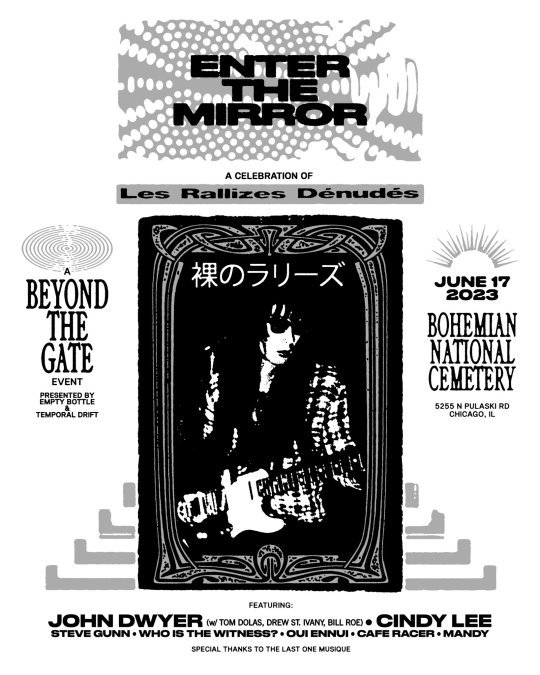
Super curious to hear the John Dwyer set for this Les Rallizes Dénudés tribute show in a cemetery in Chicago and thanks to Youtuber - seijinlee - we can check it out. SWEET
The band for Dwyer's LRD covers set - John Dwyer vox/gtr (OSEES), Tom Dolas bass (Mr. Elevator), Drew St Ivany bkg gtr (the Psychic Paramount), and Trouble in Mind co-owner Bill Roe drums (CoCoComa).
youtube
youtube
youtube
youtube
youtube
And for those not into 5-part video clips of the show here it is in one AUD source:
youtube
8 notes
·
View notes
Text
14-2-2024
[Snarky Puppy] "We Like It Here" : Honestly, does anyone actually need a review to know that Snarky Puppy is fantastic music?
"Culcha Vulcha" : It's still Snarky, it's puppy, and it's great.
[August Burns Red] "Constellations" : I love the sound of this group, although this was a particularly challenging workday, and so I didn't have the pleasure of giving this album the attention it deserves.
[Floating Points] "Crush" : A super tight modular album that runs the gamut of very approachable to relatively opaque.
[Gang of Four] "Entertainment" : Not my cup of tea per se, but definitely a fun listen for when you want some straightforward rock.
[Datach'i] "Bones" : Datach'i's style is somehow both imposing, while also maintaining a great amount of the "squeakiness" that synthesizer music has.
[Squarepusher] "Go Plastic" : I love this dude's music, but I was checked out by this time in my workshift, so I'll need to revisit it soon.
[Les Rallizes Denudes] "77 Live" : Fantastic album, very nearly sent me to hell.
#music#music review#Snarky Puppy#August burns red#Floating Points#Gang of Four#Datach'i#squarepusher#les rallizes dénudés
2 notes
·
View notes
